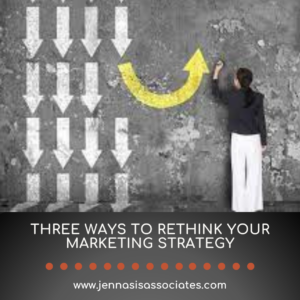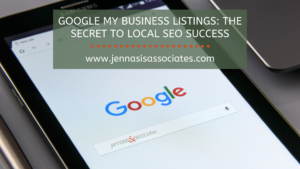At its core, advertising is simple: find where your customers are hanging out, and use tailored messaging to reach them there.
If your customers are men who watch sports, advertise on ESPN. If your customers are truck drivers, advertise on billboards along the highways that most travel on.
The same general principle applies to social media advertising.
With an estimated 3.8 billion people using social media (and a total of 4.5 billion internet users) worldwide, social media is one of the biggest messaging platforms in the world to reach your audience and generate new customers. The average person spends 135 minutes per day on social media networks.
Yet paid social media advertising is also very different from traditional advertising.
Social media advertising allows you to find, target and reach your audience easily. Each platform allows you to set goals for your business, such as brand awareness, lead generation, or website traffic, to name a few. And nearly all provide insights on analytics so you can tweak and enhance your social media ad performance of your advertising campaign in real time.
For many companies, these benefits combined with the widespread prevalence of social media use make digital advertising preferable to traditional advertising when determining advertising spend.
Where to Effectively Advertise on Social Media
So—you have a brand and you want to be able to reach as many people as possible through social media.
Which platforms should you advertise on, and how?
Here’s an overview of the top-recommended platforms to reach your target audience:
With more than a staggering 2 billion active users, Facebook is the most popular social media platform. A social media powerhouse, it’s no wonder 3 million users advertise on Facebook currently.
In addition to its large audience—which spends an average of 50 minutes on Facebook per person and generates a total of 22 billion clicks on ads per year—Facebook ads are also popular with companies because they are inexpensive and easy to set up. Most importantly, you can take advantage of in-depth demographic targeting options including location, age, gender, interests, connections and more.
At 330 million users, with 100 million using it daily, Twitter may not be as large as Facebook—but it’s still a sizable platform. It also offers some great ways to target specific audiences beyond standard demographics. Through its targeting functionality, you can focus on users who have shown interest in a certain keyword—typically something related to your business. You can also display your ads to users who have used a specific word or hashtag in their past tweets, and target those who have liked, retweeted or replied to a specific sponsored tweet of yours in the past.
To promote a tweet, you choose a goal you want to reach, such as generating website conversions, more followers, etc. Noteworthy is that with this format, you only pay when people take action on the goal you have set. Twitter doesn’t charge you for any additional organic engagement.
If your company has a specific niche, product, or service—Twitter’s robust targeting options may be the best option for your social media advertising efforts.
Instagram is another great place to advertise on social media, as it’s one of the top three fastest-growing social media platforms and tied to parent Facebook. It’s particularly beneficial for brands looking to reach younger audiences, with 90 percent of its audience younger than 35—and 60.4 percent between the ages of 18 and 24.
A key reason ads work well on Instagram is because people often don’t feel like they are being sold a service or product. Ads appear alongside standard image or video posts within users’ Instagram stories and feeds, based on demographic targeting settings just like Facebook. In fact, if you’ve advertised on one, it’s fairly easy to figure out the other from a setup standpoint.
Instagram ads do require high-quality photos or videos to catch the attention of your target audience and stand out from your competitors. If you have a “photogenic” business product, service and/or story, then Instagram may be a great place to promote your business.
Considered the “corporate edition” of social media platforms, LinkedIn allows professionals that work in the same industries or regions to connect and give more to their community. LinkedIn is officially the fastest-growing social media platform, with 467 million users—and as such, for B2B businesses in particular, a popular place to promote business services and solutions.
In fact, 50 percent of B2B buyers use LinkedIn to make decisions regarding a purchase, with a majority of users describing LinkedIn’s content as trustworthy.
Beyond its pristine professional reputation and growing audience, LinkedIn’s advertising power lies in its superior ad targeting features. You can target the audience of a campaign by standard demographic fields such location, age, and job title—but you can also target specific industries, seniority levels, and even by company.
The drawback?
Its unique positioning with such a high-value audience has resulted in LinkedIn ads being more expensive—with an average Cost Per Click (CPC) of $6, compared to other social platform CPC rates that average around $0.20). Additionally, LinkedIn ads have been shown to generate fewer click rates.
However, while fewer, these clicks are often much more granularly targeted than on other platforms—and thus, typically more qualified. If you’re a B2B looking for a high degree of prospect definition and lead quality over quantity, LinkedIn may be the best platform for you.
Tips to Craft an Effective Social Media Ad
Once you’ve chosen the platform(s) you’ll be focusing your advertising efforts on, it’s critical to fine tune your messaging—and whether you’ll be taking a more text-based or visual-based approach.
Facebook & Instagram Ads
Since Facebook owns Instagram, both platforms’ ads work in a similar fashion and include some of the same advertising formats.
In both platforms, you can create a myriad of ad types—including text, photo or video ads. While the option you choose depends on both your message and your audience, videos typically convert best—followed by images, with text trailing last.
Multiple ad types can facilitate conversions, incorporating a call-to-action button such as “Get Directions” or “Send Message.” Lead generation ads will prompt people to fill out a form—so you can drive newsletter sign-ups, gated content campaigns, and free trial or quote requests.
Other ad formats include collection ads, to highlight products right in the Facebook or Instagram feeds. Specifically on Facebook, you can use these types of ads to send direct messages and/or promoted Facebook stories, which only appear for 24 hours and allow you to be promoted at the top of Facebook’s homepage instead of just in a user’s newsfeed.
Twitter Ads
Twitter Campaign Ads focus on five different objective options: website clicks, tweet engagements, followers, awareness and app installs. By choosing to target specifically for which goal you want to meet, Twitter makes it quick and easy to set up an ad to drive that objective.
A short-form messaging messaging platform, Twitter thrives on text-based messaging more than visuals— so make sure to craft engaging, concise content for your ad. Unlike organic tweets, leave off tagging handles or promoting hashtags, as this has been shown to discourage clicks. Also, it’s best to run separate campaigns for mobile and desktop users to get the best conversion rates.
What’s more, for an additional cost, you can also take advantage of the tool Twitter Promote. An even easier, hands-off way to advertise on the platform, the tool will automatically promote ads for you—reaching 30 thousand additional people each month with a gain of 30 followers per month.
LinkedIn Ads
More B2B focused, LinkedIn ads help your business with three objectives: awareness, consideration and conversions. Through its popular Sponsored Content option, ads appear in news feeds on both desktop and mobile—looking similar to standard posts. This format gets your content in front of a larger audience, with short headlines and large headlines generating higher click-through rates.
LinkedIn also offers Sponsored InMail, which is similar to email marketing—enabling you to send messages directly to users’ LinkedIn inboxes. Only triggered when a user becomes active on LinkedIn, these messages go right to the top of users’ inbox—ensuring the timing is pretty perfect to catch their attention.
Lastly, companies can run small text ads with thumbnail images that appear at the top right of the LinkedIn news feed. However, they are only visible to desktop users.
Determining Your Social Media Ad Budget
Regardless of the social media platform or ad format you choose, you’ll need to set a spend limit for your digital ad. There’s an option for every budget, from a few dollars a day to high-dollar campaigns.
Ads on most social networks are sold in an auction format. You set a maximum bid for target results or a maximum budget per day. There’s no “set” amount to pay. As you create your ad, the ad manager will provide a recommendation for the amount to bid based on the goals or objectives that you decide on. Typically, you look at Cost Per Click (CPC), Cost per 1000 Impressions (CPM), Cost per Conversion, Cost per Video View.
To determine your ad budget:
- Identify what objective you want to achieve
- Know your target audience’s habits
- Evaluate what most content and format most resonates
- Set a “maximum” limit with your means
- Pay for what matters
This last point is of particular importance. Are you more interested in impressions or engagement?
If you’re focused on widespread reach with your message, focus on impressions. You’ll pay every time someone sees your ad. Or, you can choose to pay based on engagements—when a user interacts with your ad in some way—if you’re more interested in reaching fewer, but highly-qualified leads potentially ready to do business with you.
Still not sure where to start?
If it’s your first time trying it out, simply start small—and dive in with a test ad, or ideally several versions. Evaluate how your ads perform on a particular platform, what content performs well or poorly, and what format generates the most results. Once you have a better feel for what works—best determined through trial and error, combined with throughout analyzing of performance data—fine tune your advertising strategy and increase your investment.
Start Advertising on Social Media in 2020
Once you’re up and running with social media ads, make sure to take advantage of platforms’ analytics tools to measure results and optimize—whether current ads or future campaigns.
Need help analyzing and interpreting the data to make adjustments? Or still need help getting your first ads created and launched?
From social media advertising strategy to tactical support, the marketing experts at Jennasis & Associates have the experience and resources to help. Click to reach out to our team and learn how our scalable digital marketing services can meet both your needs and your budget.






